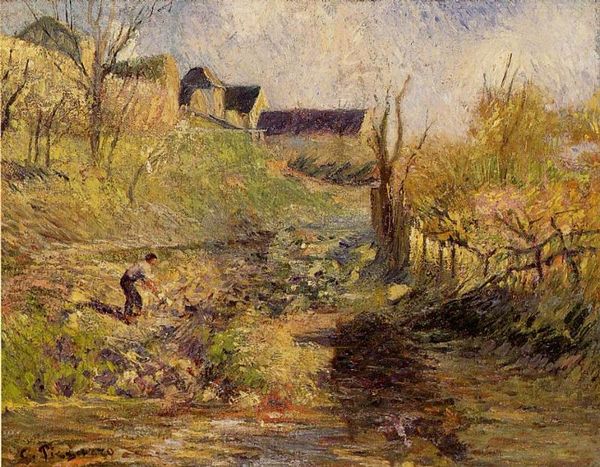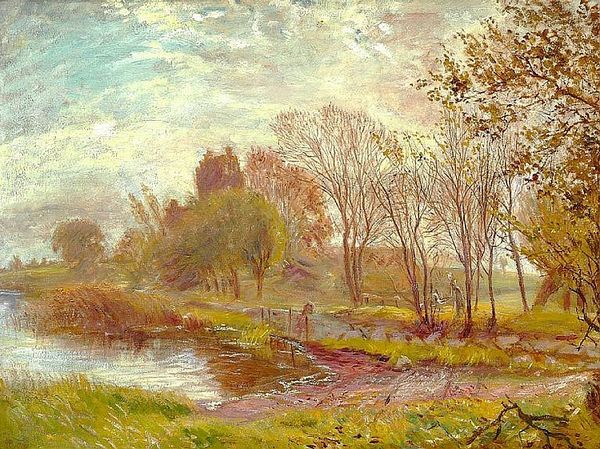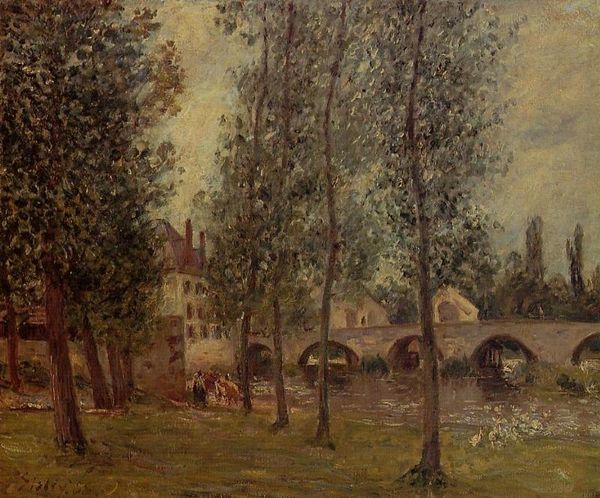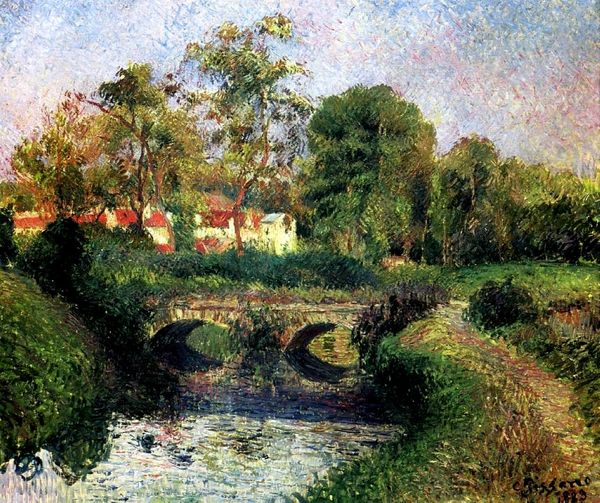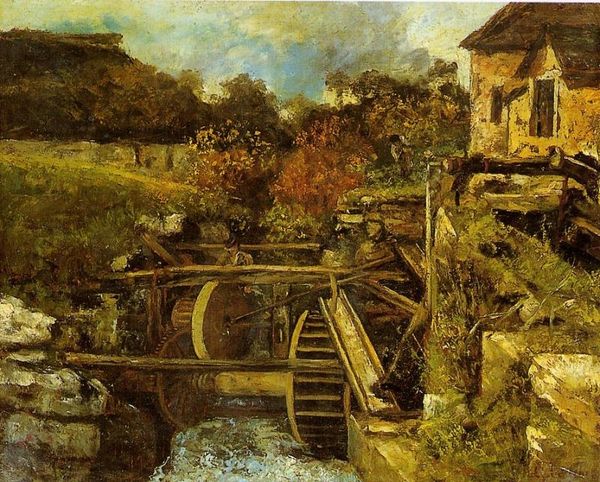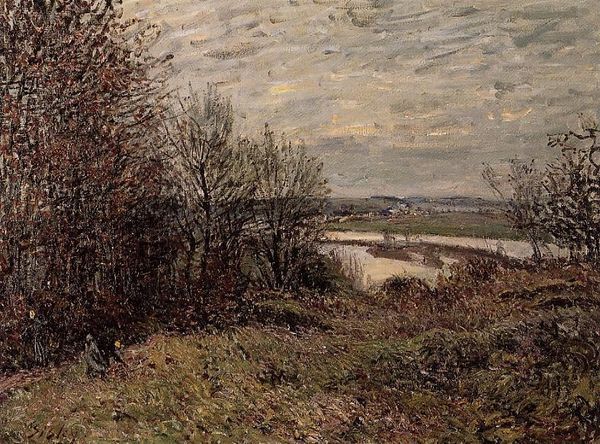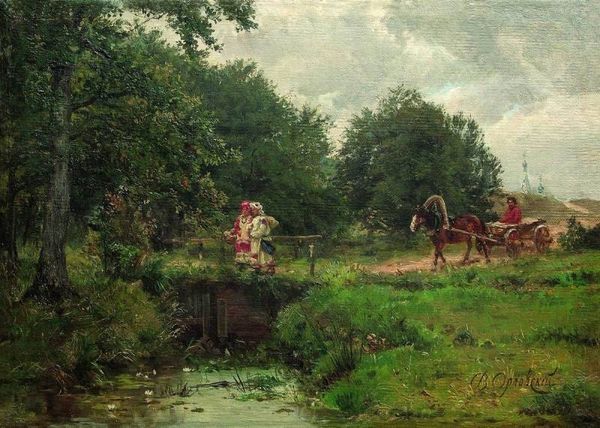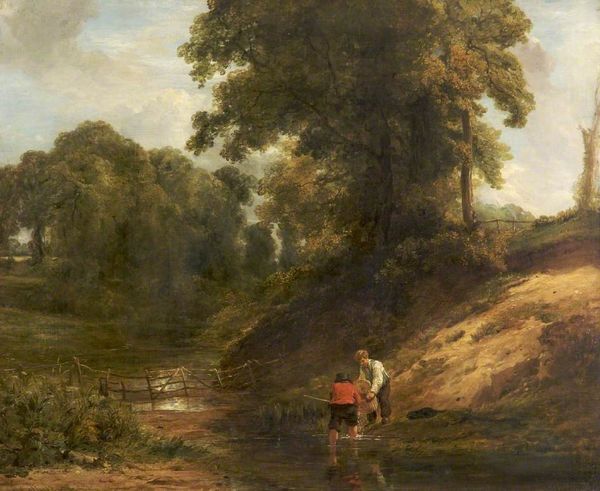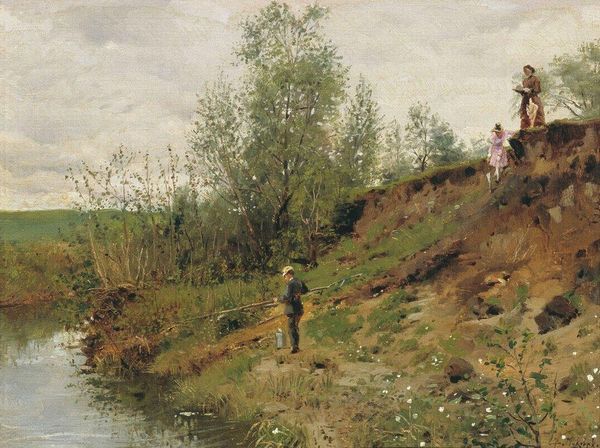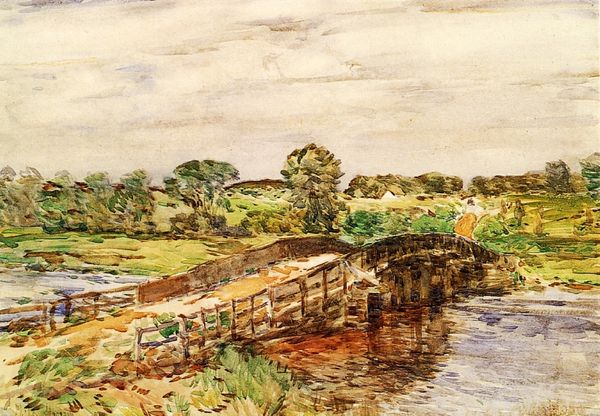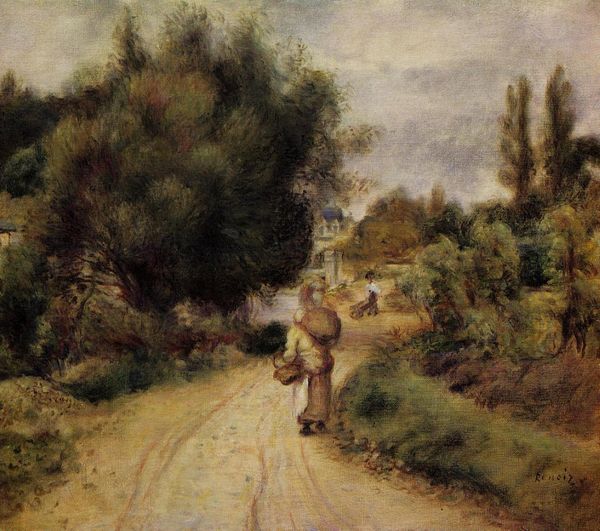
Copyright: Public domain
Curator: Ah, yes, this is James Charles's "Disturbing the Fishers," an oil on canvas painted in 1905. It’s a lovely example of his work in the impressionist style, very much of its time. Editor: It feels instantly nostalgic. The dappled light, the casual figures... it evokes a sense of peaceful, rural life from a bygone era. The way the scene is almost half hidden in lush green vegetation adds to that dream-like feeling. Curator: The figures are indeed central. It captures a snapshot of a particular moment in social history: the leisured classes enjoying the countryside. The composition suggests a separation of classes as the more plainly dressed fisherman startles the ducks right next to the refined lady overlooking the scene on a bridge. This division, so subtle, was nevertheless omnipresent at the time. Editor: Ducks feature a lot, often connoting adaptability and prosperity. It would be fascinating to see whether James Charles consciously uses ducks in this case or it simply felt natural to place them in a landscape setting like this one. I wonder too, does this snapshot contain any religious subtext? Curator: I think focusing too much on intentional symbolism obscures the larger point about the artistic trends of the era. There was growing demand for landscape painting which made the countryside an extension of urban spaces; it offered a controlled, consumable version of 'nature'. Editor: Still, look at how the darker archway mirrors the shadowy space under her hat! The dark tunnel in contrast with the bright pond—such sharp visual distinctions create tension. Those recurring dark shapes suggest perhaps an exploration of the psyche, not simply rural peace. Curator: That reading is, shall we say, speculative! It’s crucial to contextualize art within its original setting and its impact on cultural discourse, rather than projecting our own interpretations backward. While psychological analysis has its place, we shouldn't divorce the image from its social reality. Editor: But symbols survive. Regardless of their initial intent, images accumulate cultural weight. To deny their potential echoes across time diminishes the artwork's continuing power, no? What do you see as this work's public role? Curator: I believe that to contextualize the social meaning behind the painting will give our audience a view into how such leisure and gender was perceived. The public aspect stems from illustrating such moments which the rising middle-class were eager to assimilate as a social aesthetic. Editor: Fair enough, yet this peaceful and nostalgic sentiment is clearly not without a slight sense of brooding, of melancholic observation of our world as is... I found myself unexpectedly moved. Curator: And that’s what makes art so vital: it opens dialogue. This dialogue, in turn, allows the cultural heritage of a work to reverberate into our society, enriching our understanding of each other and the social reality.
Comments
No comments
Be the first to comment and join the conversation on the ultimate creative platform.
